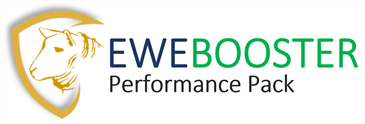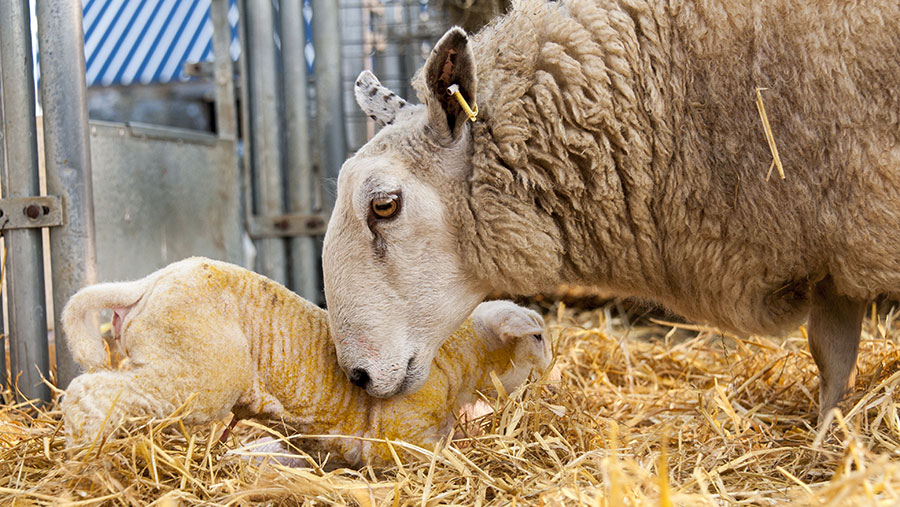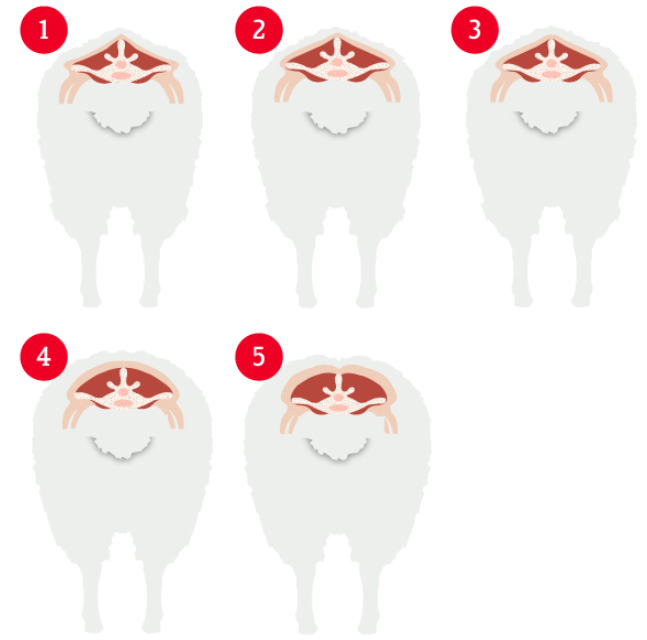By Aaron Jones, Ruminant Technical Advisor
The final six weeks prepartum represent a significant opportunity to influence flock performance. Nutrition itself is a key driver of lamb birthweight,
vigour, and survivability, with 70% of foetal growth occurring during this critical stage. Whilst the ewes feed requirement almost doubles to meet
these mounting demands, her forage intake can be depleted by as much as 30%. Therefore, appropriate concentrate feeding, and management is paramount.
Assess the Ewe
‘You cannot improve what you do not measure’ is a suitable phrase when it comes to accurately meeting the nutritional needs of the ewe. Ewes should
be pregnancy scanned for litter size and due date, so that a targeted feeding plan can be implemented. This is an
essential management tool as twin bearing ewes have a 40% greater demand for milk in contrast to single bearing ewes, increasing a further 10% for
those carrying triples.
Assessing body condition throughout the production cycle is also crucial and acts as an early warning system against metabolic diseases,
such as twin lamb. Condition can be determined by evaluating the prominence of the bones and depth of fat cover over the spinous and transverse processes,
as outlined in Figure 1, with a target BCS at lambing of 3 and 2.5 for a lowland and upland ewe, respectively. If ewes are underconditioned,
consider grouping with those bearing one more lamb to prevent any further loss of condition.
Figure 1. Ewe Body Condition Score
Analyse Your Forage
Grass silage will form the basis of many winter-feeding regimes. That said, the energy and protein requirement of the ewe during the final trimester will
often outweigh what forage alone can supply. By having your forage analysed, you can determine its feed value; allowing you to select the most compatible
concentrate, and when coupled with scan results the rate at which it should be supplemented.
Table1. Typical concentrate feed rates (kg) for 70 D-value silage ad lib
| Weeks from lambing | —8— | 6 | 4 | 2 | 1 |
| Singles | – | – | – | 0.20 | 0.20 |
| Twins | – | – | 0.30 | 0.40 | 0.60 |
| Triplets | – | 0.20 | 0.40 | 0.60 | 0.80 |
Table 2. Typical concentrate feed rates (kg) for 62 D-value silage ad lib
| Weeks from lambing | 8 | 6 | 4 | 2 | 1 |
| Singles | – | – | 0.10 | 0.25 | 0.40 |
| Twins | 0.10 | 0.20 | 0.45 | 0.60 | 0.75 |
| Triplets | 0.20 | 0.40 | 0.60 | 0.75 | 1.00 |
Table 3. Typical concentrate feed rates (kg) for hay ad lib (9MJ/kgDM)
| Weeks from lambing | 8 | 6 | 4 | 2 | 1 |
| Singles | – | – | 0.20 | 0.30 | 0.50 |
| Twins | 0.20 | 0.40 | 0.60 | 0.80 | 0.90 |
| Triplets | 0.30 | 0.50 | 0.70 | 0.90 | 1.20 |
At Chestnutt Animal Feeds we offer a free, in-house, forage analysis service to all customers, so that with the help of our technical team, you can make
timely and informed decisions concerning your ewes nutrition.
Supplement with Chestnutts Ewe Feeds
Finally, it is essential that ration selection is not viewed as a cost saving exercise, but rather an integral piece of the lambing jigsaw. Our range of
ewe pellets, blends and rolls are specially formulated with the best of ingredients and accompanied by our high-spec performance pack to optimise health,
promote milk production, and boost lamb vigour.
High Energy
Each of our ewe feeds contain optimum levels of cereals such as maize, wheat and barley to help maximise energy intakes throughout late pregnancy and suppressthe
negative energy balance naturally induced during early lactation. Our Supreme Sheep 18 & 20 Pellets also feature Megalac ®, a rumen protected fat designed to deliver energy 2.5 times more dense than cereals, without
the risk of acid load.
Quality Protein
We also recognise the importance of providing adequate bypass protein for the development of the foetus, mammary system, and subsequent colostrum / milk
production. In a year where soyabean meal has reached record prices, our commitment to producing rations to perform to the highest
level is clearly demonstrated by the significant inclusion of this quality material, such as in our Supreme Sheep 20 Pellet, with soyabean meal the
primary ingredient.
Ewe Booster Performance Pack
Each of our ewe feeds also feature a Ewe Booster Performance Pack, rich in essential minerals and vitamins and specially tailored to advance
flock performance and overcome specific challenges faced by local farmers.
Sel-Plex® is one such component, which alongside elevated levels of Vitamin E has been selected
to enhance colostrum quality, boost immunity, and combat White Muscle Disease; with the later commonly associated with Basalt rock found vastly across
Co. Antrim. This organic selenised yeast is highly digestible and in trials by UCD was proven to increase selenium milk concentration, resulting in
lambs having greater resistance to disease challenges, and higher growth rates during early lactation.

Want to find out more?
For more information on how to utilise your flocks performance this spring, or for further details on our range of ewe and lamb feeds, contact the mill
on (028) 2074 1354 or your local Chestnutt Feeds sales representative.



